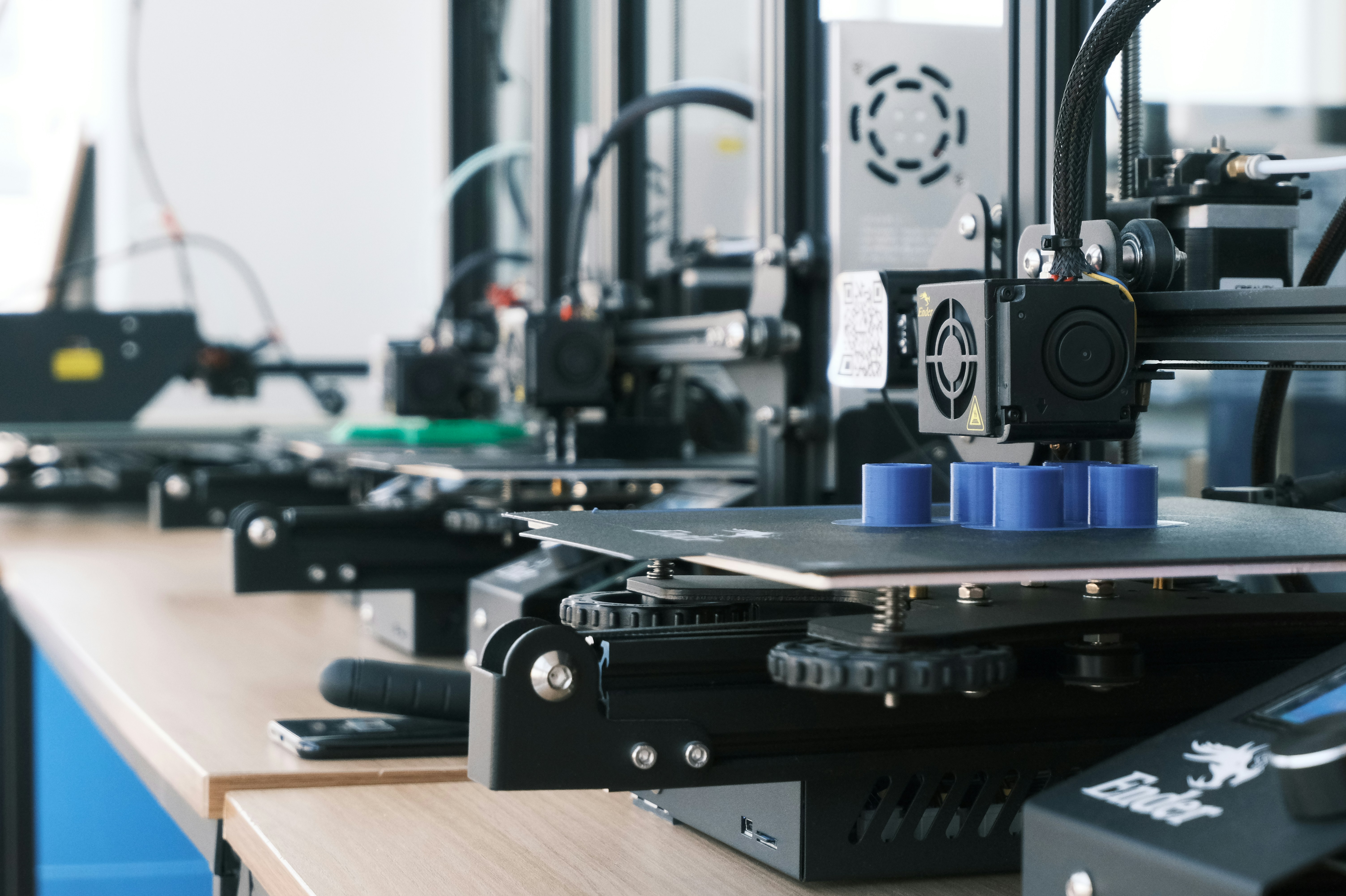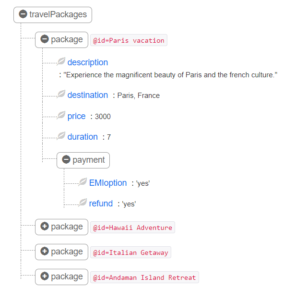
Optical Character Recognition (OCR) software is instrumental in converting non-editable document formats such as PDFs, paper documents, or images into machine-readable formats that offer editing capabilities. Widely used for extracting text from PDFs and images, OCR applications seamlessly convert it into editable formats like Word, or Excel files.
By leveraging AI/ML capabilities, OCR software can also automate data extraction from documents/images and convert them in editable format that fit in workflows.
Manufacturing is an extremely complex process that requires the coordination of many moving parts involving humans, resources, and teams all the while working on strict timelines. OCR allows manufacturers the ability to ensure a high level of product quality and safety. OCR can track date codes, lot code and batch verification, and expiration dates, and many other such data points that would require human intervention earlier. With the help of OCR software, manufacturers can quickly digitize and convert all such information into an editable format for much faster processing.
OCR technology has many use cases in manufacturing. Here are some major use cases for manufacturing OCR software:
- Verify and validate dates on a product.
- Ensure labels have all the required text.
- Scan return slips.
- Read ID numbers (i.e. ISBNs).
- Read batch codes, lot codes, etc.
- Read and validate serial number of parts moving on the production line.
A good manufacturing OCR software should be able to automate the document processing workflow of all manufacturing documents and items to reduce manual workload, eliminate errors, and save time.
Here are some of the best Manufacturing OCR software in 2024.
Capture data from all manufacturing-related documents instantly and automate data workflows with Nanonets. Reduce turnaround times and eliminate manual effort.
The Best Manufacturing OCR Software in 2024
Let’s look at some of the best Manufacturing OCR software available.
1. Nanonets
Nanonets provides an AI-powered OCR solution for manufacturers that can accurately extract data from all types of manufacturing documents and items and convert them into structured digital data. It can help manufacturers stay on time and within budget and reduce manual data entry errors.
Nanonets uses advanced OCR, machine learning image processing, and Deep Learning to extract relevant information from unstructured data.
Introduction to Nanonets
Pros:
Cons:
- Table capture UI can be better
Build your own custom OCR models or schedule a demo to learn more about Nanonets’ OCR use cases!
2. ABBYY Flexicapture
ABBYY FlexiCapture is an OCR software that can help manufacturers extract batch codes, dates, and other documents. The software can extract data from various document types, including labels, validate dates, ISBNs, etc.
ABBYY FlexiCapture for Invoices – Demo Video
Pros:
- Recognizes images very well
- Easy to store hard copy results in the system
- Seamless integration ERP systems
- Automates data extraction
Cons:
- Initial setup can be difficult and complex
- No ready-made templates
- Difficult to customize
- No resources available
- Could have better integration with RPA solutions
- Low accuracy with low-resolution images/documents
3. Kofax Omnipage
Kofax Omnipage is a PDF OCR solution that is able to automate high-vloume. It specialises in extracting from tables, matching line items, and smart extraction.
Pros:
- Robust set of tools for enhancing images
- Highly accurate
Cons:
Need an OCR software to extract data from manufacturing documents? Check out Nanonets in action!
4. Google Document AI
A solution from the Google Cloud AI suite, the Document AI (DocAI) uses machine learning to automate the classification, extraction, and enrichment of data in documents.
Pros:
- Easy set up
- Integrates well with other Google services
- Information storage
Cons:
- Lacks proper documentation
- Customization is difficult
- Outdated documentation
- Expensive
- Not suited for custom AI algorithms
AWS Textract extracts text and other data from scanned documents using machine learning and OCR. It can also identify, and extract data from forms and tables.
Pros:
- Pay-per-use billing model
- Ease of use
Cons:
- Can’t be trained
- Varying accuracy
- Not meant for handwritten documents
6. Docparser
A cloud-based document processing and OCR software. Docparser can automate low-value tasks and workflows.
Pros:
- Easy to setup
- Can integrate with Zapier
Cons:
- Webhooks fail occasionally
- Requires training to pick up the parsing rules
- Not enough templates
- Zonal OCR approach – can’t handle unknown templates
- Slow to load pages
7. Adobe Acrobat DC
Acrobat DC provides a comprehensive PDF editor with an in-built OCR functionality.
Pros:
- Stability/compatibility.
- Ease of use
Cons:
- Expensive
- Not an exclusive OCR software
8. Klippa
Klippa is an automated document management, processing, and data extraction solution for digitizing paper documents in an organization.
Pros:
- Fast setup
- Great support
- Clear and concise API documentation
- Competitively priced
- Integrations
Cons:
- Limited template customizations
- Limited white-label customizations
- Bulk adjustments not supported
- Can’t train the OCR model
Check out Nanonets OCR API‘s use cases that could optimize your business performance, Find out how Nanonets’ use cases can apply to your product.
Why is Nanonets the most complete Manufacturing OCR software?
Nanonets OCR software is easy to use and set up. The intelligent automation platform can handle unstructured data and the AI can also handle any data constraints easily. Nanonets can easily help automate all types of construction documents such as application forms, blueprints, completion forms, and drawings.
The benefits of using Nanonets OCR in manufacturing go just beyond better accuracy, experience, and scalability.
- Data capture and entry – Nanonets OCR can be used to accurately capture data from labels, documents, and product specifications within seconds. The extracted data can directly be connected to any project management software, reducing the need for manual data entry and improving accuracy.
- Documentation and storing – Nanonets OCR can easily create digital and editable copies of all types of manufacturing documents. These documents can then be easily stored and retrieved whenever required.
- Quality control – Nanonets OCR can provide multiple approval steps before a document is ingested into the system or sent for approval. This helps in identifying errors early and reducing the resources and costs required for rework.
- SEO Powered Content & PR Distribution. Get Amplified Today.
- PlatoData.Network Vertical Generative Ai. Empower Yourself. Access Here.
- PlatoAiStream. Web3 Intelligence. Knowledge Amplified. Access Here.
- PlatoESG. Carbon, CleanTech, Energy, Environment, Solar, Waste Management. Access Here.
- PlatoHealth. Biotech and Clinical Trials Intelligence. Access Here.
- Source: https://nanonets.com/blog/best-manufacturing-ocr-software/
- :has
- :is
- :not
- $UP
- 1
- 200
- 2024
- 8
- a
- abbyy
- ability
- Able
- About
- accuracy
- accurately
- adjustments
- Adobe
- advanced
- AI
- AI-powered
- AI/ML
- All
- allows
- also
- an
- and
- any
- api
- Application
- applications
- Apply
- approach
- approval
- ARE
- AS
- At
- automate
- Automated
- Automation
- available
- BE
- before
- benefits
- BEST
- Better
- Beyond
- billing
- budget
- business
- CAN
- capabilities
- capture
- cases
- character
- character recognition
- check
- classification
- Cloud
- code
- codes
- complete
- completion
- complex
- comprehensive
- concise
- connected
- construction
- content
- convert
- converting
- coordination
- copy
- Costs
- could
- create
- custom
- data
- data entry
- data points
- Date
- Dates
- dc
- deep
- deep learning
- demo
- difficult
- digital
- digitize
- digitizing
- directly
- document
- document management
- documents
- Drawings
- e
- Earlier
- Early
- easily
- editor
- effort
- eliminate
- embedded
- enhancing
- enough
- enrichment
- ensure
- entry
- ERP
- Errors
- etc
- Excel
- Exclusive
- experience
- expiration
- extract
- extraction
- Extracts
- extremely
- FAIL
- faster
- Files
- fit
- For
- format
- forms
- from
- functionality
- Go
- good
- Google Cloud
- handle
- Hard
- Have
- help
- helps
- here
- High
- How
- HTTPS
- human
- Humans
- i
- ID
- identify
- identifying
- image
- images
- improving
- in
- Including
- information
- instantly
- instrumental
- integrate
- integration
- intervention
- into
- invoices
- involving
- IT
- items
- just
- Labels
- LEARN
- learning
- Level
- leveraging
- like
- Line
- load
- Look
- Lot
- machine
- machine learning
- major
- management
- manual
- Manufacturers
- manufacturing
- many
- matching
- meant
- models
- Month
- more
- most
- moving
- much
- multiple
- Need
- number
- numbers
- OCR
- OCR Software
- OCR Solution
- of
- offer
- on
- Optimize
- or
- organization
- Other
- out
- Paper
- parts
- performance
- pick
- plato
- Plato Data Intelligence
- PlatoData
- points
- process
- processing
- Product
- Product Quality
- Production
- project
- project management
- proper
- provide
- provides
- quality
- quickly
- recognition
- reduce
- reducing
- relevant
- require
- required
- requires
- Resources
- Results
- return
- rpa
- s
- Safety
- Save
- Scalability
- seamlessly
- seconds
- sent
- serial
- set
- setup
- should
- smart
- Software
- solution
- some
- specifications
- stay
- Steps
- store
- stored
- Strict
- structured
- such
- suite
- suited
- system
- tasks
- teams
- Technology
- template
- text
- that
- The
- Them
- then
- These
- this
- time
- timelines
- times
- to
- tools
- track
- Train
- Training
- types
- ui
- unknown
- Unsplash
- unstructured
- use
- used
- uses
- using
- VALIDATE
- various
- Verification
- very
- Video
- WELL
- whenever
- while
- widely
- with
- within
- Word
- workflows
- working
- would
- Your
- youtube
- zephyrnet












